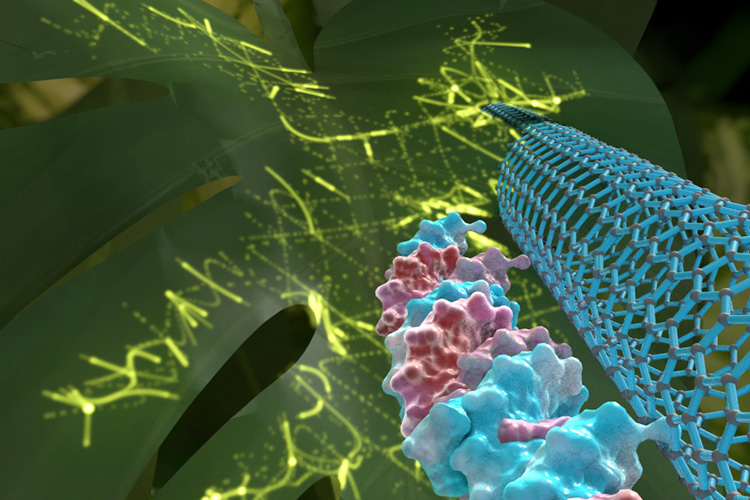What are Carbon nanotubes? The pioneer who discovered carbon nanotubes. Sumio Iijima is a Senior Research Fellow at NEC’s Central Research Laboratories. He inspired the world with his discovery of new carbon nanotube materials in 1991. Carbon nanotubes (CNT’s) are cylinders of one or more layers of graphene (lattice) measured in nm (one thousand-millionth of a meter). CNT’s exhibit dimensional and chemical compatibility with biomolecules, such as DNA and proteins.
Modifying the genetics of a plant requires getting DNA into its cells. That’s fairly easy to do with animal cells, but with plants it’s a different matter.
“Plants have not just a cell membrane, but also a cell wall,” says Markita Landry, assistant professor of chemical and biomolecular engineering at the University of California, Berkeley.
Scientists have tried different ways to get DNA and other important biological molecules through the cell wall – by shooting microscopic gold bullets coated with DNA into the cell using a gene gun or by hiding DNA inside bacteria that can infect plant cells.
Discovering the use of Carbon Nanotubes to transfer DNA and biological molecules through the cell walls, stemmed from a completely different study.
“I’m a physicist,” Landry says. “When I started my lab at Berkeley two years ago, my lab was focused exclusively on imaging between cells.” She was planning to use carbon nanotubes as kind of external scaffolding around the cells to make it easier to see what was going on between them. “This was a project that failed pretty hard and pretty quick, because instead of staying outside of the plant cells as we had presumed, these nanotubes were going straight into the cells,” Landry says.
A strand of DNA is small enough to slip through the plant cell wall, but it’s not rigid enough. “You can kind of think of it like a floppy string,” Landry says. “If you try to push a floppy string through a sponge, it’s not really going to work, but if you take a solid needle and try to push it through a sponge, that will work much better.”
The impact of this breakthrough is enormous. Scientists will now be able to, through CRISPR (Clustered Regularly Interspaced Short Palindromic Repeats – gene editing) produce new variations of trees and plants. Just imagine slicing an apple and leaving it in the fridge without turning brown? Or a banana not going soggy and black? Although there is still a long way to go in perfecting this technique, CARBON NANOTUBES IN PLANT GENE MANIPULATION is here to stay.







